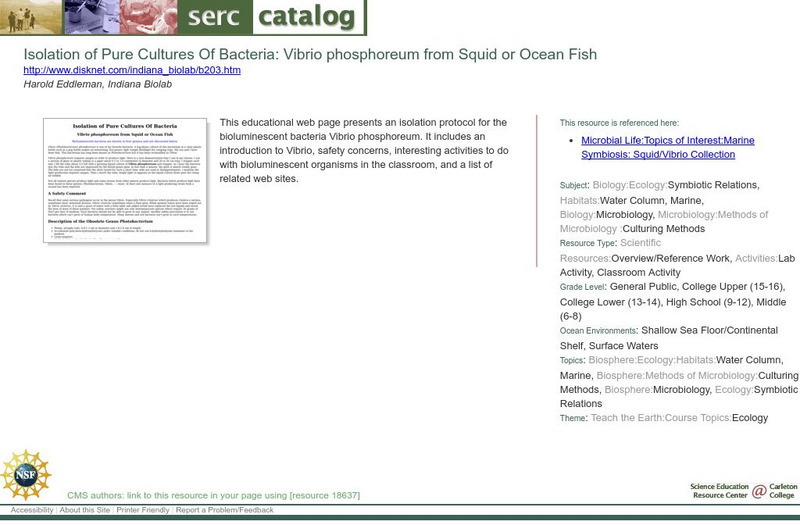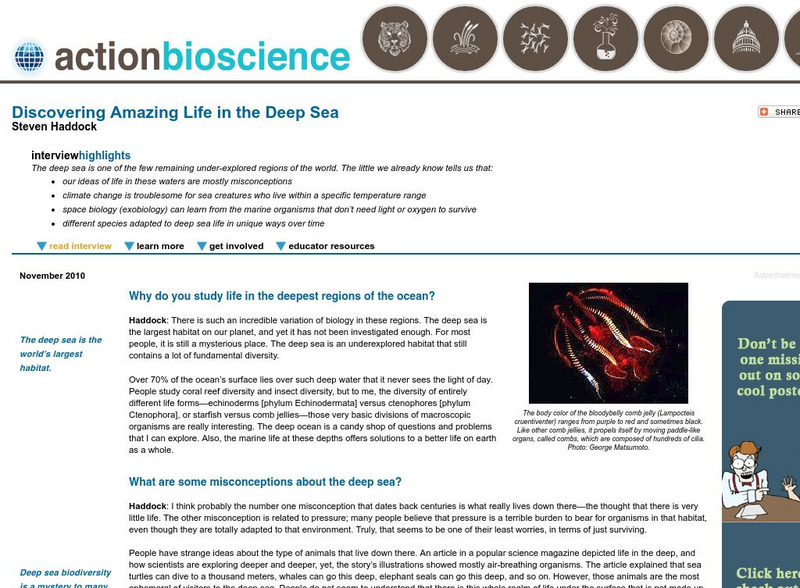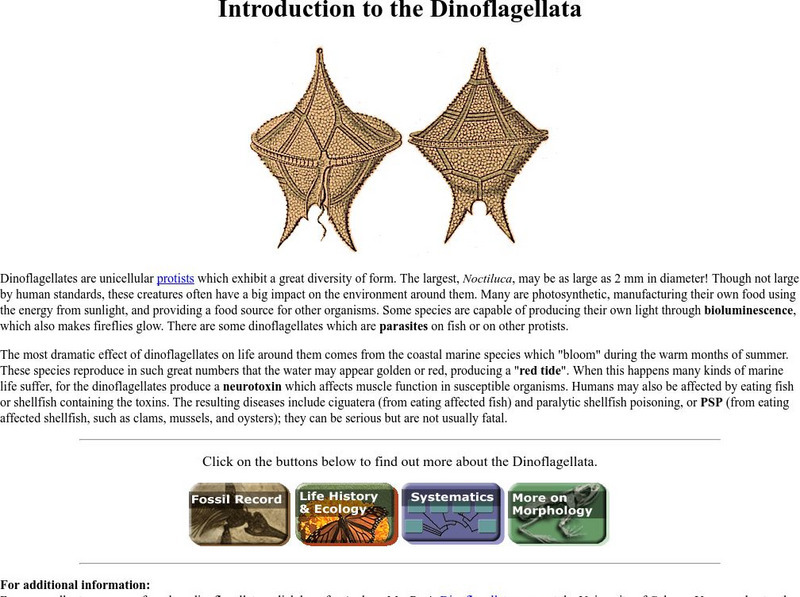Curated OER
Who Has the Light?
Students study ways in which the ability to produce light may be useful to deep-sea organisms. In groups, they research and present to the rest of the class, how a specific organism is able to produce bioluminescence.
Curated OER
Light Up the Deep Sea
Students simulate bioluminescence in the marine environment. In this marine science lesson, students investigate how animals in the deep ocean communicate with each other. They explain the function of bioluminescence among marine organisms.
Curated OER
Creatures That Glow In The Night
Young scholars investigate the different bioluminescent organisms. They use microscopes in order to make observations and draw what is seen. Students demonstrate they have studies the differences between the process of photosynthesis and...
Curated OER
Bioluminescent Bewilderment!
Ninth graders investigate the concept of bioluminescent. They break down the word phonetically for correct pronunciation. This is done as a warm up for learning. Then students create a list of the creatures from prior knowledge and...
Curated OER
All That Glitters...
Young scholars study that white light (visible light) is comprised of all colors of the spectrum. They study that the quantity of light decreases with increasing depth in the ocean. They study that the quality of light changes with...
Curated OER
Cool Lights
Students investigate how and why deep-sea organisms produce light. They examine how these processes can be used to study deep ocean environments.
Curated OER
Where is That Light Coming From?
Students investigate the chemistry of bioluminescence and discuss how various organisms benefit from this trait. They prepare a report about of at least one organism that receives each of the benefits discussed.
Curated OER
Goals of the Diversity of Life Unit
Students are introduced to the unit on the importance of diversity of life and the role that interdependence plays in our worlds. this is part of a multi-lesson unit on the diversity of life.
Curated OER
What is Diversity of Life?
Students are introduced to the variety of organisms in our world. this lesson is a part of a multi-segmented unit on specie diversity. this segment explores distribution of life on land and sea.
Curated OER
Kingdom Animalia
Students are introduced to the basic characteristics of the animal kingdom. this lesson is part of a multi-segmented unit on the diversity of life. In this segment, students explore the the members of a few phyla of the animal kingdom.
Curated OER
Tackling Taxonomy
Young scholars study physical characteristics of separate phyla and place them into similar groups. This lesson is part of a multi-segmented unit on the diversity of life. students develop a classification system by grouping animals into...
Curated OER
Creative Classification
Students create an animal by using physical characteristics to classify that animal in the Linnaean Classification System. This instructional activity is part of a multi-segmented unit on the diversity of life.
Curated OER
Missing Links
Students change one animal group into another animal group by changing only a few body characteristics. This lesson is part of a multi-segmented unit on the diversity of life. In this session, students the basis of classification.
Curated OER
Diversity Debate
Students investigate the importance of dependency and diversity in a rain forest ecosystem. This lesson is part of a multi-segmented unit on the diversity of life.
TED Talks
Ted: Ted Ed: The Brilliance of Bioluminescence
Some lucky animals are naturally endowed with bioluminescence, or the ability to create light. Leslie Kenna investigates this magical glow and our quest to replicate it. [4:09]
Sam Houston State University
Sam Houston State University: Chemiluminescence
Chemiluminescence is explained with QuickTime and Flash movies. Features links to resources for both higher grades and younger students.
Science Buddies
Science Buddies: Bioluminescence: Investigating Glow in the Dark Dinoflagellates
Biotechnology science fair project to investigate the bioluminescence of dinoflagellates.
Science Education Resource Center at Carleton College
Serc: Isolation of Pure Cultures of Bacteria
A web page that gives activities for use of bioluminescent organisms in the classroom. Specifically on the page is "an isolation protocol for the bioluminescent bacteria Vibrio phosphoreum".
American Institute of Biological Sciences
Action Bioscience: Discovering Amazing Life in the Deep Sea
A research biologist at the Monterey Aquarium and a professor at UC-Santa Cruz is interviewed to explain the studies done in the deep sea. Steven Haddock addresses the purpose of uncovering the mysteries of life and environment lying out...
University of California
University of California at Santa Barbara: Pictures of Bioluninescent Animals
The animals pictured are bioluminescent. Click on an image to see a larger photo and a short explanation.
BBC
Bbc Nature: Wildlife: Shallow Seas
Investigate the fascinating world of the shallow seas and discover what lives and grows there through pictures, news, and external links.
University of California
Ucmp: Dinoflagellates
The University of California provides background material on dinoflagellates which exhibit bioluminescence. Site includes information on their fossil record, ecology, and structure.
University of Washington
University of Washington: Ctenophores
This is an advanced essay on the biology of ocean-dwelling "comb jellies."
San Diego Natural History Museum
Sdnhm: Kids' Habitat: Lights Alive
A website that investigates the chemistry of bioluminescence and living lights.

























